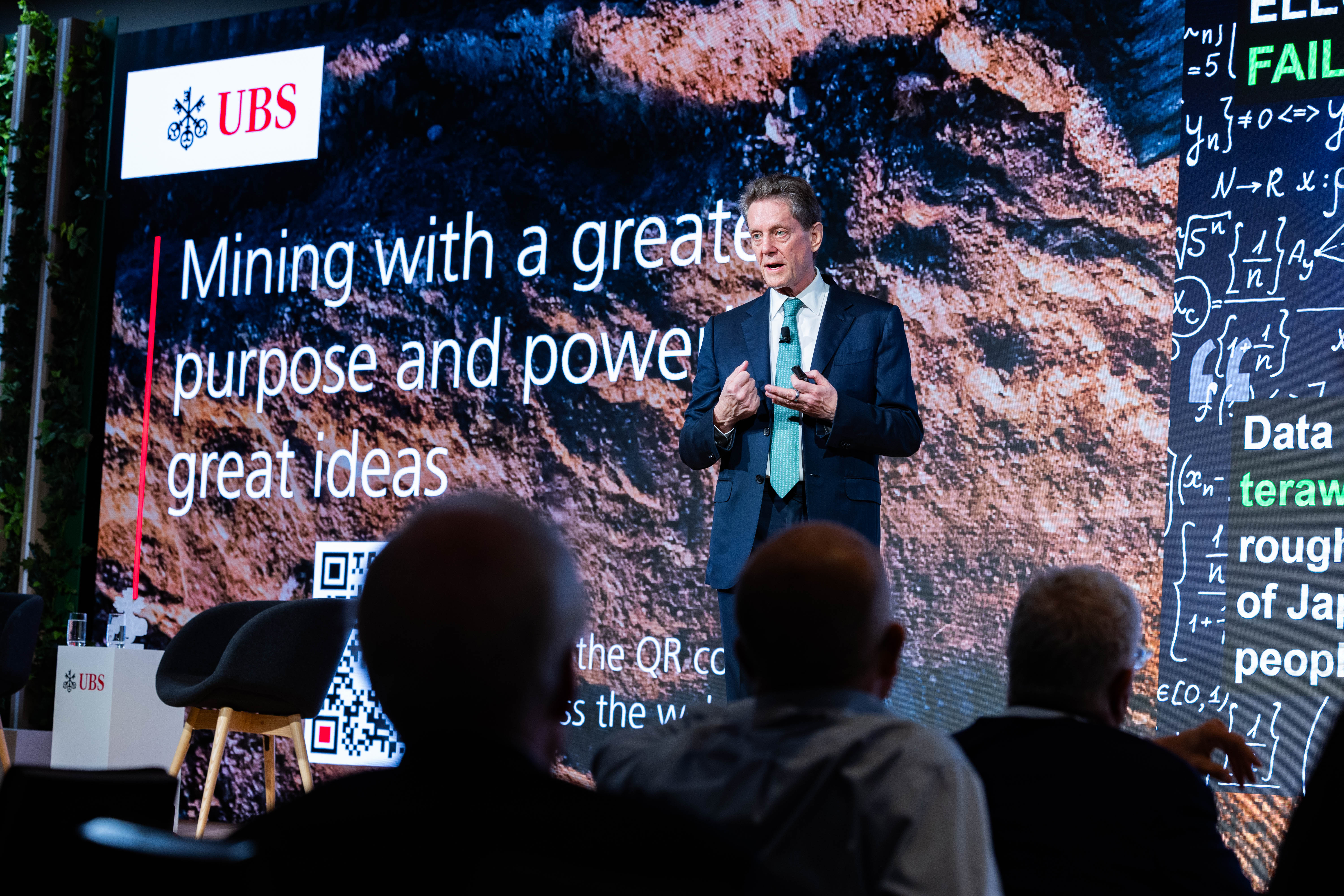Copper has become a national security issue. Here’s why mining is ramping up
For all the challenges the mining industry is facing, from the green transition to concerns around pollution, ultimately it's here to stay. Mining is a critical part of the potential solutions to those very concerns for a long time to come.
It’s not the only thing either.
Critical minerals are essential in the AI transformation—and, furthermore, to the increasing militarisation of the world. It’s a frightening truth that the US military is one of the biggest consumers of copper, and it is far from alone in an increasingly uncertain world.
As Robert Friedland, Chairman of Ivanhoe Mines, pointed out at UBS Australasia’s Conference 2024 on Monday, November 11, “Copper is a national security issue.”
Arguably, we have reached a new age of mining – and the winners will dominate the globe in decades to come.
Supply for minerals barely scratches the surface
Friedland points to three major drivers for the ongoing demand for rare earths and minerals – particularly copper, the most conductive and commonly used metal for electricity.
1. The green transition
There is tremendous spending on modernising the grid. China, for example, intends to spend $800bn by 2030.
2. Artificial intelligence
“There is not enough electricity to power the US’s artificial intelligence ambitions,” says Friedland, pointing to plans to invest $1.35tr in artificial intelligence globally by 2030.
Artificial intelligence is extraordinarily energy-hungry. For example, Friedland highlights that Japan planned to build a data centre by 2030 that used 21 gigawatts of power - the equivalent of 21 nuclear power plants for one centre. This massive demand is forcing a modernisation of grids and the need to look at alternatives.
3. The military
Simon Hunt Strategic Services estimated copper usage in military applications were 2.186 million metric tonnes in 2021 and growing at 14% annually through to 2026. The increasing militarisation of the world and heavy use of copper in missiles and artificial intelligence applications mean the military is facing a severe supply shortage of copper.
According to Friedland, copper, in particular, has become crucial. He notes that 700 million metric tonnes have been mined throughout history, and we need to mine 700 million metric tonnes in the next 22 years to keep up with demand.
At this stage, Bloomberg estimates we will need six new large copper mines every year – and this doesn’t factor military demand but, rather, the needs for the green transition.
Friedland argues that the country with the most control over copper supplies will “win the minerals war” and have the ability to be dominant in artificial intelligence as well as in military technology.
China is currently the largest buyer of copper and is investing heavily in this space, including in Africa, where 30% of the world’s known critical minerals lie.
“They’re making massive investments in all aspects of the critical raw material supply chain and they are literally a generation ahead of the West,” Friedland says.
-62.jpg)
Investing in copper
A supply crisis in the world of copper is looming – and it spells opportunity for companies like Ivanhoe – though it’s no quick fix when you consider it took over two decades for Ivanhoe to get its Congo-based Kamoa-Kakula mine operating. It also explains why BHP has bet $7.4bn on building its copper base.
Friedland views Africa as the major opportunity base for a few reasons.
Firstly, as mentioned earlier, it is mineral-rich. It currently supplies around one-fifth of the world’s copper and is set to become increasingly dominant.
Secondly, its drier desert environment offers a lower-risk option for miners. Friedland explains that countries with high rainfall pose higher risks – tailings dams must not fail in perpetuity and that’s a harder thing to guarantee or insure against in countries with higher rainfall. He would rather have the challenge of locating water for activities than trying to prevent disasters.
From that perspective, he believes Latin America will become less of a focus. Ivanhoe views “everything south of Panama as uninvestable " due to wetter conditions and a range of political challenges.
Friedland is already seeing country investments in copper mining start to ramp up—as forementioned, China is heavily involved. He believes that during this term of the Trump Presidency, there will be a greater focus on critical minerals supply given the tech team Trump has surrounded himself with.
While Africa is a big focus, this remains a strong opportunity for Australia.
“Australia is one of the most reliable sources of minerals,” says Friedland, adding, “this partnership [between Australia and the US] is the most important minerals partnership in the world.”
The future of mining
With the ramp up in demand for minerals, mining businesses are also having to invest in future technologies.
One that Ivanhoe, BHP, Rio Tinto and Newcrest have all invested in is a US unicorn called i-Pulse Group, which uses pulsed power for a range of mining activities, such as breaking rocks or more efficient blasts for mines. It aims to make mining activities cheaper and more energy efficient. The biggest potential for this that Friedland sees is in enabling cheap and efficient access to geothermal power through cheap and efficient drilling – and that, he believes, could be the biggest game-changer for energy supply yet.
It could be mining's best days are still to come - there's plenty of life left in this old dog.
2 topics

